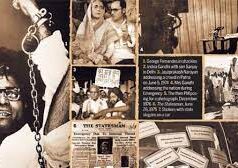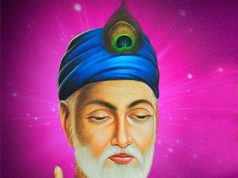The NCERT has made 1,334 changes, which include additions, corrections and data update, in its 182 textbooks. Of these, the maximum changes (573) have been made to Science books, followed by Social Science (316) and Sanskrit textbooks (163).
The revised NCERT textbooks place new emphasis on a fresh set of nationalist icons, many of whom, the BJP and right organisations claim, were deliberately sidelined in the country’s collective memory. Spiritual leaders Sri Aurobindo and Swami Vivekananda, freedom fighters Lala Lajpat Rai and Vallabhbhai Patel, Peshwa and Maratha general Bajirao Ballal, Jat king Suraj Mal, Rajput icon Maharana Pratap and Chhatrapati Shivaji, founder of the Maratha empire, have either been introduced or have more space dedicated to them in the new History textbooks that hit the shelves two months ago.
The Indian Express, in a month-long exercise, compared old and revised versions of 25 textbooks meant for Classes 6 to 10, across five subjects — History, Geography, Political Science, Science and English. According to the analysis, the revision is more noticeable in the case of Swami Vivekananda and Aurobindo Ghose.
– The Class 8 History textbook, Our Past-III, Part II, introduces Sri Aurobindo and his thoughts on the goals of national education along with his photograph. “In a speech delivered on January 15, 1908 in Bombay, Aurobindo Ghose stated that the goal of national education was to awaken the spirit of nationality among the students. This required a contemplation of the heroic deeds of our ancestors… Aurobindo Ghose emphasised that although the students should remain connected to their own roots, they should also take the fullest advantage of modern scientific discoveries and Western experiments in popular governments,” the textbook states.
– While the old version of Our Past-III, Part II makes a brief mention (21 words) of the Ramakrishna Mission and Swami Vivekananda, the revised book carries another 250 words on the latter. The new paragraph quotes the New York Herald’s report on Vivekananda’s speech at the World’s Parliament of Religions in Chicago extensively,
– NCERT has added the names of Chandra Shekhar Azad, Sukhdev and Rajguru to the section in Chapter 11 of Our Past-III, Part II that talks about freedom fighter Bhagat Singh. The previous version of the textbook read, “Revolutionary nationalists such as Bhagat Singh and his comrades wanted to fight colonial rule and the rich exploiting classes through a revolution of workers and peasants.” The reprinted version replaces the words “and his comrades” with the names of Chandra Shekhar Azad and Sukhdev. Earlier, the textbook only spoke of Singh’s execution. It now mentions that Rajguru and Sukhdev were hanged along with him.
– Chapter 10 of the Class 7 History textbook, Our Past-II, introduces Suraj Mal (under the section titled ‘The Jats’) as the king under whom “the power of Jats reached its zenith”. “Suraj Mal built a number of forts and palaces and the famous Lohagarh fort in Bharatpur is regarded as one of the strongest forts built in this region,” it states.
– In addition to the existing text on Shivaji in chapters 3 and 10 of Our Past-II, chapter 10 (under the section on Maratha rulers) now carries an additional 100 words on the Maratha ruler, his guerrilla warfare tactics and how he embarked on a career of conquest at a young age, and, subsequently, laid the foundation of a strong empire. A portrait of Shivaji has also been introduced in this chapter.
– The section on Marathas in the same chapter, which talks about the role of Peshwas in building the Maratha empire, now also mention Peshwa Baji Rao I as a great general known for “his military campaign against Malwa, Bundelkhand, Gujarat and the Portuguese”. The section credits him with expanding the kingdom beyond the Vindhyas.
– Maharana Pratap has also been introduced in the last chapter of the Class 7 History book, in the section titled ‘The Watan Jagirs of the Rajputs’. This section is on the influential Rajput kings, especially those from Amber and Jodhpur, who served under the Mughals and in exchange “were permitted to enjoy considerable autonomy in their watan jagirs”. Here, Maharana Pratap of Mewar has been introduced as an exception, who did not give in to Mughal authority. “A series of envoys were sent to the Rana to persuade him to accept Mughal suzerainty, but he stood his ground,” it states.
The previous version of the Class 7 History book was criticised by Shiv Sena and the Hindu Janajagruti Samiti for having insufficient or no information on Shivaji and Maharana Pratap, respectively, but several pages on Mughal rulers. Union Home Minister Rajnath Singh, too, has said on many occasions that the Rajput warrior has not got his due in history and that historians should re-evaluate Maharana’s contribution.
– Although the two icons are represented in the History textbook of Class 8, NCERT has added more information on Lala Lajpat Rai and Vallabhbhai Patel in Chapter 3 of the Class X book, India and the Contemporary World-II.
– The NCERT introduced a full page on the Paika rebellion of Odisha or the Khurda uprising of 1817 in the Class 8 History textbook Our Past-III, Part II. It is one of the earliest resistance movements by the people of Odisha against colonial rule and was led by Buxi Jagabandhu, the commander of the then Khurda king.
Of late, this event has become a political hot potato for the BJP and the BJD in Odisha with Jagabandhu’s great granddaughter joining the BJP last year and the Chief Minister writing to the HRD Ministry, asking the government to declare the Paika rebellion as the first War of Independence.
The above changes are part of the textbook review — the first since 2007 — undertaken last year by the NCERT, an autonomous organisation that advises the HRD Ministry on school education.
Sources in the NCERT maintain that all the changes, corrections and additions are based on feedback received by the Council last year. “As you are aware, personalities such as Aurobindo Ghose and Swami Vivekananda were missing from the History textbooks. We have tried to correct that. We can assure you that all changes made are based on public feedback and suggestions,” said an NCERT source who did not wish to be identified.
The NCERT has made 1,334 changes, which include additions, corrections and data update, in its 182 textbooks. Of these, the maximum changes (573) have been made to Science books, followed by Social Science (316) and Sanskrit textbooks (163).
Other changes & additions
– NCERT has added portraits of Rani of Kittur, freedom fighter Veer Surendra Sai, Rani Laxmi Bai, Bahadur Shah Zafar, Peshwa Nana Sahib and Veer Kunwar Singh, a hero of the 1857 rebellion, across different chapters of the Class 8 History book Our Past-III, Part II.
– Chapter 4 of Class 7 History, Our Past-II, has new material on Akbar commissioning translation of many Sanskrit works such as Mahabharata, Ramayana, Lilavati and Yoga Vashisht into Persian.
– Chapter 8 (Devotional Paths to the Divine) of Our Past-II has a new paragraph on the Vaishnava poet-saints of Maharashtra such as Dnyaneshwar, Namdev and Tukaram. The same chapter also has new information on the Rishi order of Sufism that flourished in Kashmir in the 15th and 16th centuries.
– Chapter 8 (Devotional Paths to the Divine) of the Class 8 History book has included more material on Sankaradeva, a Bhakti saint from Assam, whose teachings were based on Bhagavad Gita and Bhagavat Purana.
– Chapter 6 of the Class 7 History textbook talks about the keen interest taken by Vijayanagara rulers in building tanks and canals.
Courtesy: Indian Express














